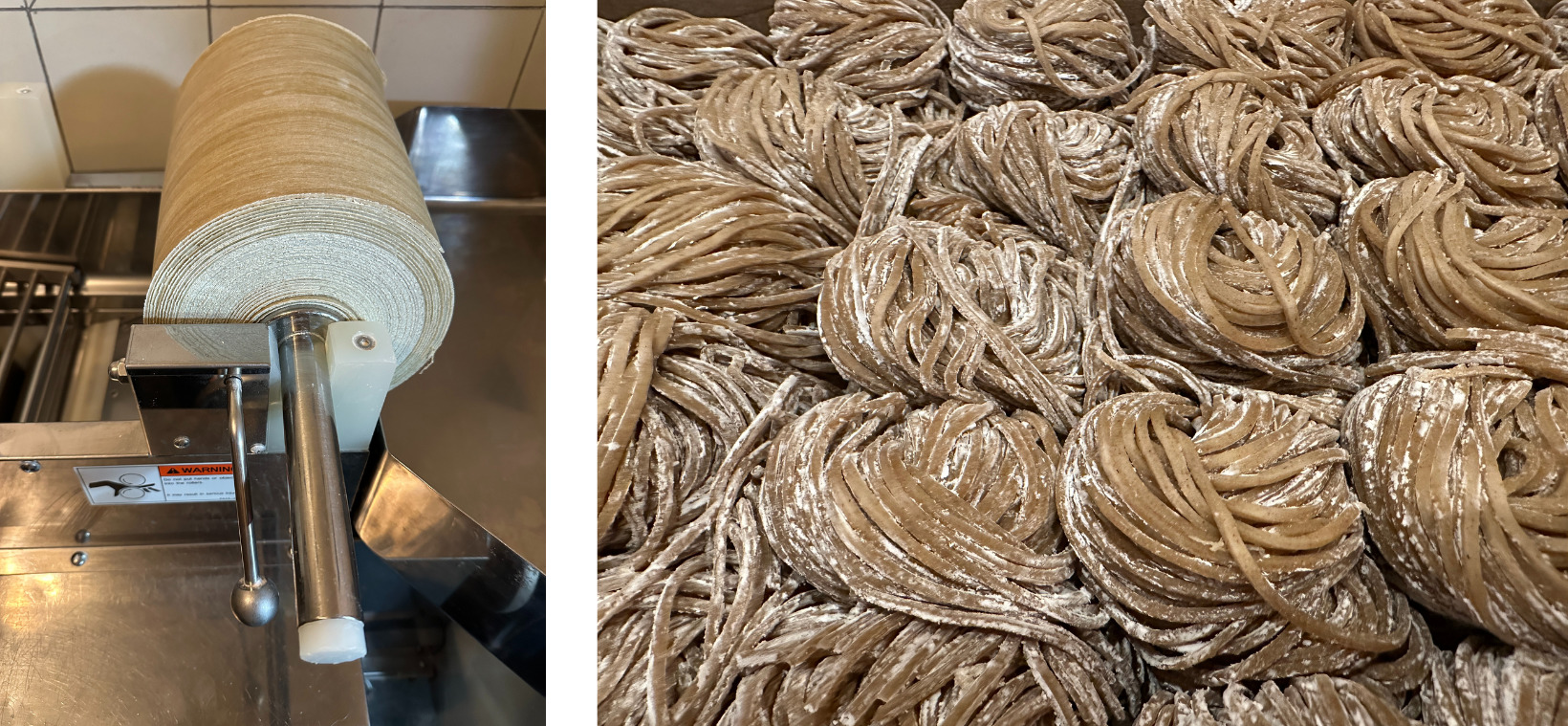Gastropod looks at food through the lens of science and history.
Co-hosts Cynthia Graber and Nicola Twilley serve up a brand new episode every two weeks.
Co-hosts Cynthia Graber and Nicola Twilley serve up a brand new episode every two weeks.
Barak Kushner is a professor of East Asian history at the University of Cambridge, and the author of Slurp! A Social and Culinary History of Ramen: Japan's Favorite Noodle Soup.
 Left, rolled alkali dough waiting to be cut into noodles at Ramen Shop in Oakland, California; right, finished noodles awaiting their delicious broth bath. (Photos by Nicola Twilley.)
Left, rolled alkali dough waiting to be cut into noodles at Ramen Shop in Oakland, California; right, finished noodles awaiting their delicious broth bath. (Photos by Nicola Twilley.)
Gustavo "Goose" Alvarez is the co-author of Prison Ramen: Recipes and Stories from Behind Bars.
Food consultant Mark Hoshi is a former ramen shop worker and today runs the Ramen Culture website.
 Two extremely perfect and wildly delicious bowls of noodle soup at Ramen Shop: left, the vegetarian meyer lemon shoyu ramen; right, the tantanmen ramen with pork chashu. (Photos by Nicola Twilley.)
Two extremely perfect and wildly delicious bowls of noodle soup at Ramen Shop: left, the vegetarian meyer lemon shoyu ramen; right, the tantanmen ramen with pork chashu. (Photos by Nicola Twilley.)
Our thanks to Rayneil De Guzman, Sam White, and the team at Ramen Shop in Oakland for hosting us! If you're in the neighborhood, do yourself an enormous favor and treat yourself to a bowl of their heavenly ramen.
Click here for a transcript of the show. Please note that the transcript is provided as a courtesy and may contain errors.